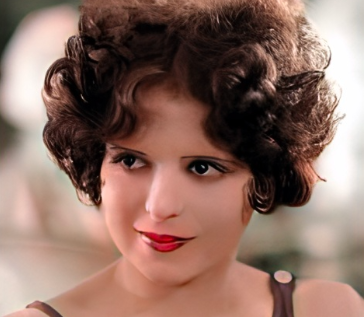Who is myrtle gonzalez ?
Introduction to Myrtle Gonzalez
Myrtle Gonzalez, hailed as the “First Latin American Movie Star,” was a trailblazing figure in the early years of Hollywood. Born on September 28, 1891, in Los Angeles, California, to Mexican immigrant parents, Myrtle’s journey to fame was truly extraordinary.
Table of Contents
Displaying a passion for performance from a young age, Myrtle showcased her singing and dancing talents at local events, swiftly gaining recognition for her skills. Her breakthrough moment arrived when director Thomas Ince discovered her during a local theater production.
At a mere 19 years old, Myrtle entered the world of cinema with her debut in the silent western film “The Invaders” (1912), marking the commencement of her illustrious Hollywood career. Over the ensuing decade, she graced the screen in more than 80 films, including notable works such as “The Easter Lily” (1915), “The Serpent” (1916), and “One Law for Both” (1917).
Myrtle’s allure and charisma captivated audiences, establishing her as one of the era’s most beloved actresses. Often cast in roles that highlighted her vivacious personality and comedic prowess, she earned the moniker “La Única” or “the unique one.”
Beyond her acting prowess, Myrtle Gonzalez served as a pioneer for women in the film industry. In an era when female performers were frequently confined to stereotypical roles as damsels in distress or femme fatales, Myrtle fearlessly embraced dynamic characters that challenged prevailing gender norms.
Early Life and Career Beginnings
Born on September 28, 1891, in Los Angeles, California, Myrtle Gonzalez was the youngest among five siblings in the household of Mexican immigrants, Francisco Gonzalez and Maria Rodriguez. Her father worked as a carpenter, and her mother dedicated herself to homemaking.
Growing up in the culturally rich city of Los Angeles, Myrtle experienced a melting pot of cultures and languages. Residing in a diverse neighborhood, she absorbed Spanish from her parents and English from her schoolmates.
At the tender age of 14, Myrtle’s life took a transformative turn when a traveling vaudeville troupe performed at her school. Enchanted by the stage, she persuaded her parents to allow her to join the troupe as an assistant. This pivotal moment ignited her love for acting, and from then on, she harbored a clear aspiration to pursue it as a lifelong career.
Career Beginnings
Embarking on her journey as a performer, Myrtle Gonzalez graced local theaters throughout Los Angeles, diligently refining her acting prowess. Complementing her dedication to acting, she pursued dancing lessons, mastering diverse styles such as ballet and flamenco.
A pivotal moment arrived in 1911 when, at the age of 20, Myrtle secured her inaugural film role in “The Immigrant,” under the direction of D.W. Griffith. Despite being a modest supporting role, this marked the inception of her prosperous Hollywood career.
Rise to Fame in Silent Films
Myrtle Gonzalez, recognized as “The Virgin of the Silver Screen,” emerged as a Mexican-American actress who achieved fame in the early 1900s through compelling performances in silent films. Despite encountering limited opportunities for Hispanic actors and beginning her career with modest roles, Myrtle’s unwavering talent and determination propelled her to become one of the era’s most sought-after actresses.
Born on September 28, 1891, in Los Angeles, California, Myrtle, raised by her Spanish mother and American father, cultivated a passion for acting in her diverse upbringing. Engaging in local theater productions from a young age, her innate grace and poise caught the eye of film producer Mack Sennett, leading to a contract with Keystone Studios.
In 1913, Myrtle made her cinematic debut in the short film “Giving Them Fits.” Although a minor role, it marked the inception of a remarkable career spanning over two decades. Her ability to convey emotions through expressive eyes without uttering a word gained her recognition, securing prominent roles in feature films like “Love’s Forgiveness” (1915) and “The Silent Witness” (1917).
However, the pinnacle of Myrtle’s acclaim arrived when she starred alongside the renowned comedian Roscoe ‘Fatty’ Arbuckle in “Fatty’s Plucky Pup” (1915), catapulting her to widespread recognition.
Personal Life and Relationships
Myrtle Gonzalez’s personal life and relationships played a pivotal role in shaping both her identity as an actress and as an individual. Born on September 28, 1891, in Los Angeles, California, to Mexican parents—a stage actor father and a singer mother—Myrtle’s early exposure to the world of performance naturally ignited her love for the craft.
Growing up, Myrtle shared a close bond with her family, often accompanying them to their own performances. At the age of 16, she made her stage debut, earning acclaim for her acting skills. However, it was her foray into the film industry that propelled her to widespread recognition.
In the realm of romance, Myrtle experienced two marriages during her lifetime. Her initial union was with silent film director George Marshall in 1913, lasting six years before ending in divorce due to personal differences. In 1929, she entered into a second marriage with cinematographer Allen McNeil, a partnership that endured until his passing in 1950.
Despite the challenges in her love life, Myrtle maintained a positive outlook and unwavering dedication to her career. She fostered strong friendships within the film industry, cultivating enduring connections with fellow actresses Dolores Del Rio and Ramona Novarro.
Legacy of Myrtle Gonzalez
Myrtle Gonzalez’s enduring legacy serves as a timeless source of inspiration, leaving an indelible mark on generations of actors and actresses within the film industry. As one of the pioneering Mexican-American actresses to achieve success in Hollywood, she played a pivotal role in paving the way for future Latinx performers, dismantling barriers to representation in the world of entertainment.
Born on September 28, 1891, in Los Angeles, California, Myrtle Gonzalez’s journey toward stardom was practically predestined. With a mother who was a theater actress and a father esteemed as a theater manager, her early exposure to the performing arts fueled a passion for the stage. Making her debut at the tender age of three, Myrtle continued to grace the stage throughout her childhood.
Upon completing high school, Myrtle wholeheartedly pursued a full-time career in acting. Initially securing minor roles in silent films, her talent captured the attention of movie producer Thomas Ince. Recognizing her potential, Ince entrusted Myrtle with the lead role in “A War-Time Widow” (1915), a turning point that catapulted her into stardom and established her as one of Hollywood’s leading ladies.
Myrtle’s enchanting beauty, magnetic charisma, and innate acting abilities swiftly endeared her to audiences, earning her the moniker “The Virginian Beauty” for her role as Milly Erne in “The Virginian” (1914).
Controversies and Scandals
Like many celebrities, controversies and scandals were woven into the tapestry of Myrtle Gonzalez’s life, despite her flourishing Hollywood career. Her personal life became a focal point of public attention, exposing her to the tumultuous side of fame.
One particularly notorious controversy enveloped Myrtle’s connection with director Herbert Blaché. At the time, Blaché was married to Alice Guy-Blaché, a luminary in early cinema. Myrtle’s involvement with Blaché led to their scandalous affair, resulting in Blaché’s divorce from Alice in 1922. This indiscretion caused a seismic stir in Hollywood, casting a shadow over both Blaché’s and Myrtle’s reputations.
Another persistent controversy in Myrtle Gonzalez’s career pertained to her Mexican heritage. Despite being a Los Angeles native with Spanish ancestry, she grappled with discrimination based on her appearance and surname. In an era where acceptance for Mexican Americans in Hollywood was limited, Myrtle found herself constrained by stereotypical roles, such as the “exotic temptress” or “fiery Latina.”
Rumors about Myrtle’s love life further fueled the tabloids. Her flirtatious demeanor on set and alleged romantic entanglements with various co-stars, including the rumored liaison with Hollywood giant Francis X. Bushman, stirred scandal. Though never officially confirmed, the speculation surrounding their relationship added another layer of controversy, especially as Bushman was married at the time.
Influence on Hollywood and Pop Culture
Myrtle Gonzalez, renowned as “the American Beauty,” made a profound mark as a silent film actress in the early 20th century, leaving an enduring legacy that continues to resonate in Hollywood and pop culture.
Her ascent to stardom commenced with a standout performance in the 1914 film “The Count of Monte Cristo.” Myrtle’s innate beauty and magnetic on-screen charisma swiftly captured the hearts of audiences and garnered acclaim from both viewers and critics. With each subsequent role, her popularity soared, establishing her as one of the era’s most coveted actresses.
Gonzalez’s indelible influence on Hollywood is evident in her groundbreaking efforts to redefine the portrayal of female characters in films. In an era where women were often confined to roles as damsels in distress or femme fatales, Gonzalez introduced depth and complexity to her characters, challenging societal norms and laying the foundation for future female leads.
Additionally, Myrtle Gonzalez stood as a trailblazer for Latinx representation in Hollywood. As one of the earliest successful Mexican-American actresses, she shattered barriers and provided opportunities for other minority performers. Her work not only challenged stereotypes but also demonstrated that individuals from diverse backgrounds could thrive in an industry traditionally dominated by white actors.
Beyond her impact on Hollywood, Gonzalez’s influence extended into pop culture, where her beauty became an idolized symbol. Fans across America embraced fashion trends inspired by her distinctive style, showcasing the enduring and pervasive nature of her cultural impact.
Remembering Myrtle Gonzalez: Honors and Tributes
Myrtle Gonzalez, recognized as the inaugural Latin American movie star, remains a revered and celebrated talent, with her legacy enduring through ongoing acknowledgments and tributes. Despite the brevity of her impactful Hollywood career, Myrtle Gonzalez has left an indelible imprint on the film industry, serving as a trailblazer for subsequent generations of Latino actors.
In this segment, we delve into the various honors and tributes bestowed upon Myrtle Gonzalez over the years. From prestigious awards to commemorative events, we aim to illuminate the ways in which her significant contributions to cinema persistently garner recognition and remembrance.
- Posthumous Awards
Despite her life being cut short at the age of 27, Myrtle Gonzalez’s remarkable talent garnered posthumous acclaim. In 1919, she posthumously received a Bronze Plaque from Photoplay Magazine for her outstanding performance in “The Mexican,” a role hailed as one of her finest.
Furthermore, in 1920, Alma de Mexico magazine bestowed upon her an honorary award, recognizing Myrtle as “the most beautiful woman in Mexico.” These posthumous accolades stand as enduring tributes, underscoring Myrtle’s enduring impact on both American and Latin American audiences.
- Star on the Hollywood Walk of Fame
In 1960, Myrtle Gonzalez was bestowed with a star on the prestigious Hollywood Walk of Fame. This recognition stands as one of the highest honors reserved for individuals who have made noteworthy contributions to the entertainment industry.
Conclusion
In summary, Myrtle Gonzalez emerged as a trailblazing actress during Hollywood’s formative years, leaving an indelible mark on the film industry. Confronting various challenges, she steadfastly committed herself to her craft, leaving behind a legacy that serves as a perennial wellspring of inspiration for countless actors and actresses across generations.
Her profound impact on the history of cinema underscores her significance as a pivotal figure in the entertainment realm. Myrtle Gonzalez, through her talent, determination, and ardent love for acting, remains an enduring symbol as one of the inaugural Mexican-American stars in the annals of Hollywood.






